Tips to Improve Your Winter Photography
by Alex W.
Depending on where you are in the world, snow can be either an annual guarantee or a rare winter treat. But one thing is universal – Snow makes for fantastic photography opportunities.
This is especially true in more temperate climates, where the arrival of snow can transform and offer new perspectives on every day subjects. Examples include deciduous trees, frozen lakes, and quaint cottages. However, as is usually the case, photographing the snow isn’t without it’s challenges.
The first thing you need to do is correctly prepare for photographing in the snow. This is crucial for both your safety and comfort and isn’t a step that should be skipped.
Contents
You Might Like… Making the Most of a Rainy Day in Photography
Preparations for Winter Photography
Wrap up Warm
It’s a no brainer really – If you want to go outside in Arctic temperatures it makes sense to wrap up warm. Safety is paramount, but even without that consideration do you think you’ll make better images when you’re wrapped up warm or shivering with all your extremities completely numb?
Not only that, but in many parts of the world snow is a fleeting treat to photograph, and heading out fully prepared allows you to take full advantage of it and stay out longer than you normally would.
Layers are the order of the day here. By layering your clothing you not only keep yourself comfortably warm but also have the ability to remove layers if you take a strenuous hike or head inside for lunch.
-
Fjällräven Men's Skogsö Padded Jacket Sand/Tarmac M
- Lightly padded jacket in G-1000 original filled with G-Loft Supreme
- Snug-fitting, adjustable hood
- Lower Body – Keeping your feet warm is essential, and I do this by wearing thermal socks and waterproof hiking boots along with thermal trousers.
- Torso – This is where the layers come into play. I simply go with a base layer, t-shirt, fleece, and warm jacket. Then add in a waterproof layer if your top layer isn’t already waterproof.
- Head – Nobody likes cold ears, so I pull on a warm hat and a Buff to keep my neck warm too.
- Hands – Keeping your hands warm is incredibly important, which is something you’ll already know if you’ve ever tried to operate a camera with frozen fingers. I either go with the two-gloved approach of a thinner glove (for operating the camera) underneath a thick ski glove or these fancy photography gloves where you can detach the fingertips.
- Additional Supplies – As always, a warming flask and a few bits of food go a long way to keeping morale high. I also add in crampons and an ice axe if doing higher level shooting and walking poles for lower level walks.
Don’t Neglect Your Gear
It’s not just humans that suffer from the effects of the cold, camera gear also struggles with it. Fortunately you don’t have to worry about your lens getting frostbite, but there are a few things you should take into consideration before heading out for a days shooting.
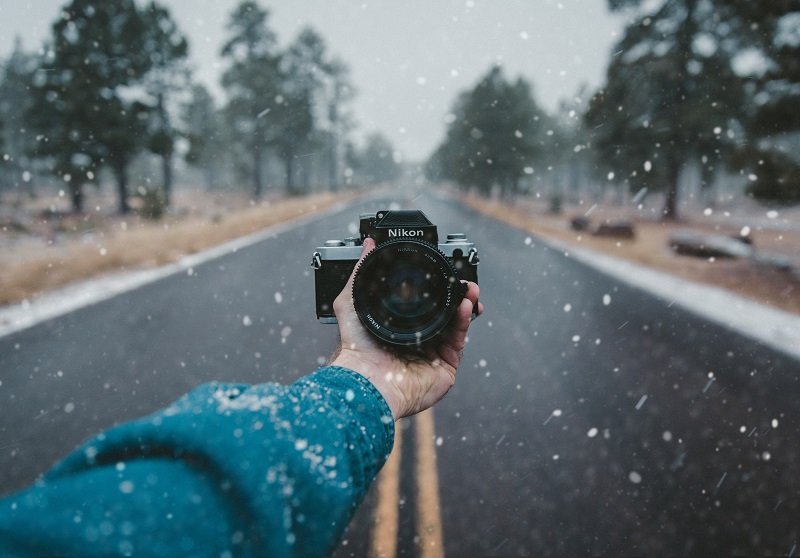
The main one is to take extra batteries with you. Cold weather drains batteries much faster than normal, so your usual supply of batteries might not be enough. Keep the spare batteries in a pocket to keep them nice and warm as well and prolong their life.
If you do find yourself running desperately short on power, a good trick is to put your battery under your armpit for 10 minutes – That should squeeze a little bit of extra juice out of it so you can nail that crucial shot.
Snow also has the annoying tendency to be incessantly attracted to the front element of the lens. Take whatever you can to keep the snow off your lens, whether that be lens hoods or umbrellas. Pack extra lens cloths as well to clear the inevitable melted snow off the lens.
Camera equipment these days is pretty hardy and durable, but shooting in cold weather can be troublesome. Batteries running dry and snow on your lens are inconvenient, but there is one potentially damaging aspect to be considered. That is the transfer of your camera from cold to warm conditions or vice-versa.
This can cause condensation to build up inside your camera body or lens, and once that happens it can easily damage electrical components. The easiest way to counter this is to keep your camera in the bag for 20 minutes or so after changing environments, allowing the inside of the bag to gradually acclimatise and avoid that abrupt change in temperature.
Now our preparations are complete it’s time to have some fun!
Shooting in the Snow
Mind Your Exposure
Snow is white – I’m sure that isn’t exactly breaking news to any of you. Unfortunately it is breaking news to your camera’s metering equipment, which can have major problems finding the correct exposure for the snow.
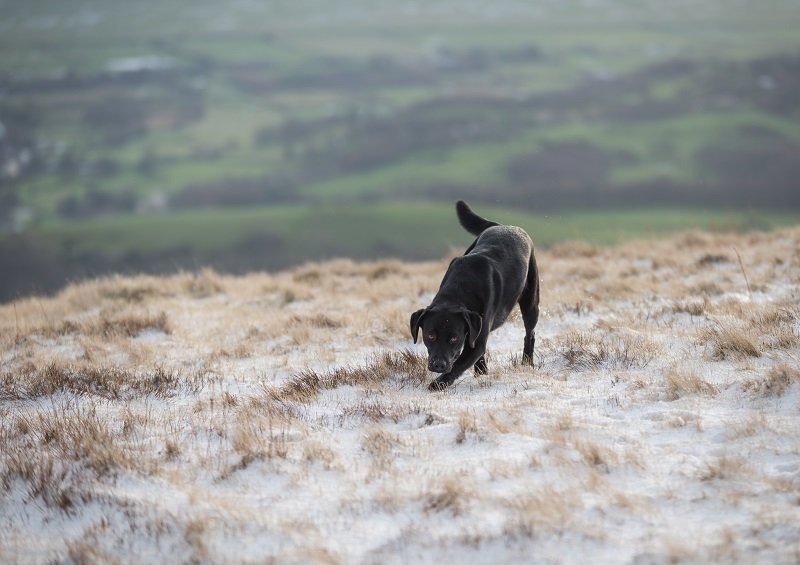
The problem lies in the actual goal of a camera’s light meter. Ideally, the meter wants everything to appear a neutral grey, and when our scene is filled with pure white snow the meter thinks that’s too bright and instead wants to render it a grim grey colour.
This is where it’s vital that you know and understand The Exposure Triangle.
This can easily be fixed in the field if you’re shooting in manual mode (as you should be) and can also be fixed in post-processing if you’re shooting in RAW (again, as you should be.)
All you need to do in the field is overexpose the scene by about one stop. This takes that neutral grey to the more natural white colour of snow. Just make sure to use the histogram and ensure you aren’t blowing out the highlights.
Experiment with Depth of Field and Shutter Speed in the Snow
This largely applies to when the snow is still falling, and it can make a huge difference to the final image. Changing your depth of field or shutter speed using the Exposure Triangle completely changes the way the falling snow appears in the final image.
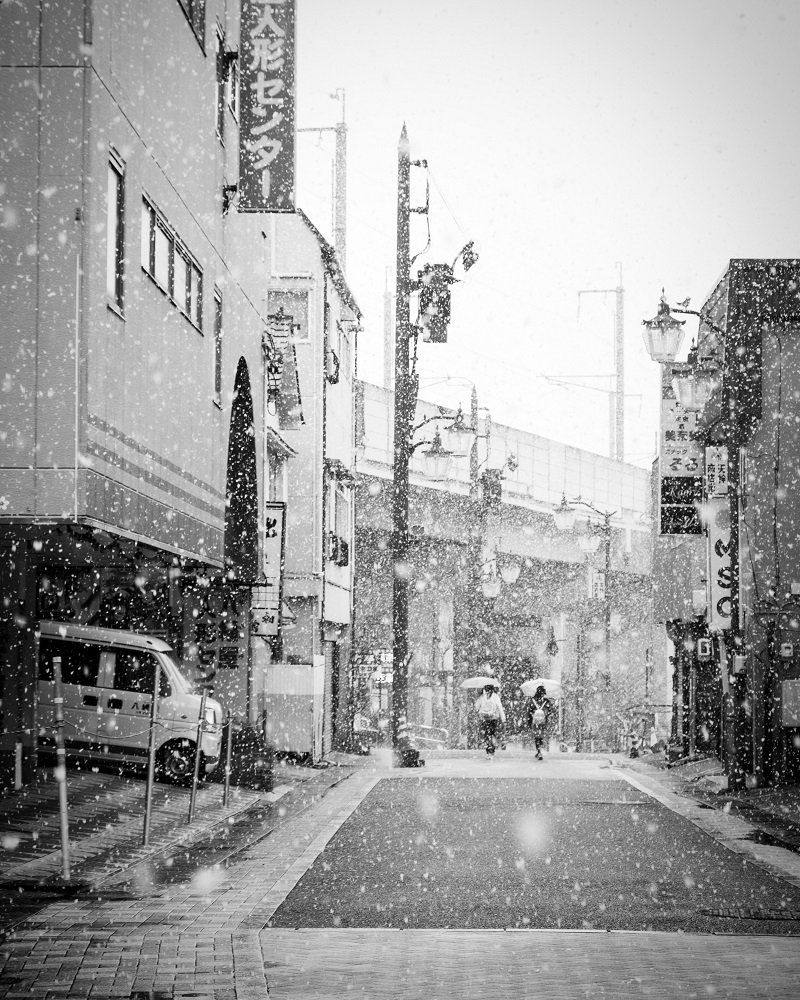
- Depth of Field – Altering the depth of field unsurprisingly determines if the falling snowflakes are in focus or not. By using a shallow depth of field you can render smaller snowflakes almost invisible, or turn the larger snowflakes into ethereal falling blobs. A larger depth of field can capture both the main subject and the falling snow in focus. It’s down to you to decide which one you prefer!
- Shutter Speed – Again, this can completely change how the falling snow appears. A longer shutter speed will render the snow as streaks falling from the sky, whilst going for a faster exposure will freeze the snowflakes in motion and give them a lot more definition.
Use Strong Lines and Contrast
Snow may seem like just another weather condition, but it’s also a symbol. It’s clean, pure, and unspoiled, and taking advantage of that predisposed symbolism allows us to create eye-catching images.
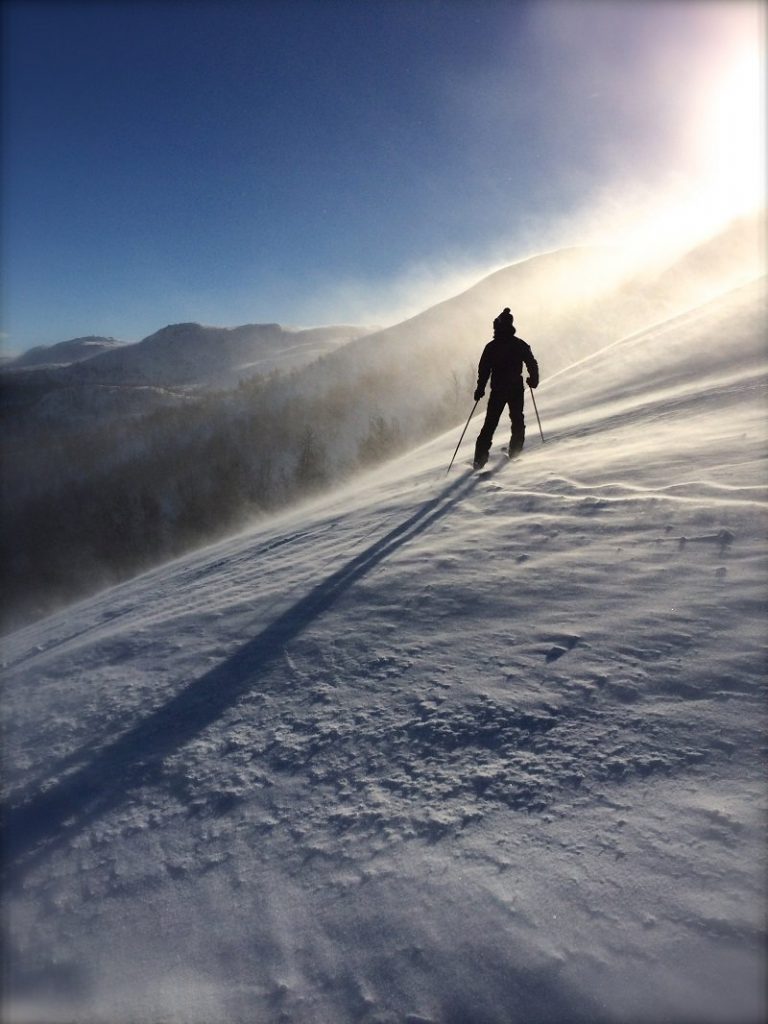
Breaking up the clean snow with strong lines or bold colour contrast results in striking images that immediately drawn attention from the viewer. These contrasts don’t necessarily have to jump out and assault the senses, they just need to be present and eye-catching enough to draw the attention.
You can use features such as walls and fence lines to create bold lines across the white landscape, or you can go for stunning colour contrasts by integrating splashes of colour in amongst the vast whiteness. The colour red works especially well, and you can check out Thomas Heaton’s “Red Hut in Norway” for an excellent example of that in action.
This use of bold compositional approaches works especially well when combined with this next tip…
You Might Like… 5 More Tips to Improve Your Composition
Keep It Simple
It’s always tempting to jam everything into your frame in an attempt to capture it all, but that is rarely the best approach to any sort of photography.
This is especially true in wintry conditions, where the crispness of the landscape lends itself perfectly to the minimalist approach. This applies to all genres of outdoor photography, and experimenting with minimalist compositions can transform your portfolio from ordinary to extraordinary if done well.

There are many ways to achieve this look, but all revolve around removing anything unnecessary from your frame. Make your image as simple as possible, and then play around with perspective. Try stepping back (or zooming out) and making your subject smaller in the frame, creating a lot of clean, negative space in your image. Here’s a few ideas to get you started:
- Landscape Photography – Combine the minimalistic approach with the bold contrasts tip above to create striking yet simple images. Look for lone trees, fence lines, mountains shrouded in clouds, and eliminate everything unnecessary. Read our Ultimate Guide to Landscape Photography series for more.
- Wildlife Photography – Add a sense of scale to the image by making your subject small in the frame. This works especially well for animals that contrast against the snow, which ensures they remain eye-catching despite only taking up a small portion of the frame.
- Street Photography – Use blizzards to keep a sense of mystery in the image, focusing on a single subject and using a shallow depth of field to obscure as much of the background as possible. Again, try making your subject small in the frame to add a sense of scale and a feeling of battling the unbeatable elements.
- Pet Photography – Use the clean, white background to your advantage to create strikingly beautiful pet portraits. Zoom in and fill the frame with the pet, and it looks even better if there are snowflakes on the animal! Check out our 10 Top Tips on Pet Photography for more helpful advice.
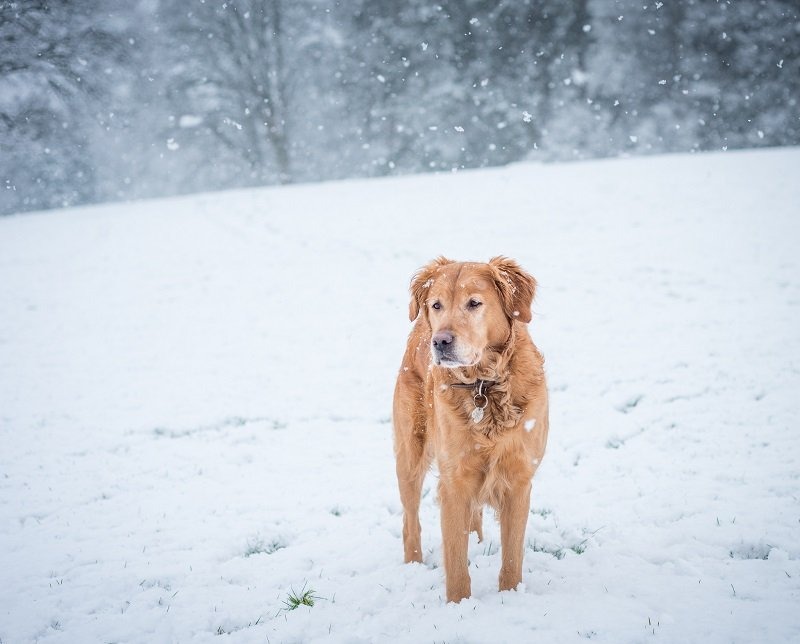
Post Processing Winter Images
Post processing plays an important role in photography and is obviously a very subjective process, but there are a few Lightroom tips that I apply to almost all my snowy images that are worth mentioning. For what it’s worth, I highly recommend getting Adobe Lightroom – It’s incredibly easy to use and offers almost all the tools you’ll ever need. You can find our beginner’s guide to Lightroom here:
- Careful With the Highlights – A lot of photographers tend to pull the highlights right down to reduce distractions from bright parts of the image, but when snow is involved this can be very detrimental. Doing this often takes all the brightness out of the snow and instead renders it an unappealing grey colour. This ‘dirty snow’ rarely improves the image, so it’s worth paying attention to.
- Consider Desaturating – This is something many photographers never even consider, but it’s definitely worth a try. If you look closely you’ll realise that snow isn’t actually white, but a subtle shade of blue that reflects the sky. Taking a few notches off the saturation or vibrancy reduces this blue tint, which often improves the image overall.
- Try High-Key – It’s often drilled into us photographers that our exposure should always be well balanced with a wide dynamic range and a good amount of contrast, but experimentation is always worthwhile. Instead of aiming for the ‘technically perfect’ exposure, try pushing the exposure slider up a bit and creating a beautiful high-key image that keeps the viewer intrigued.
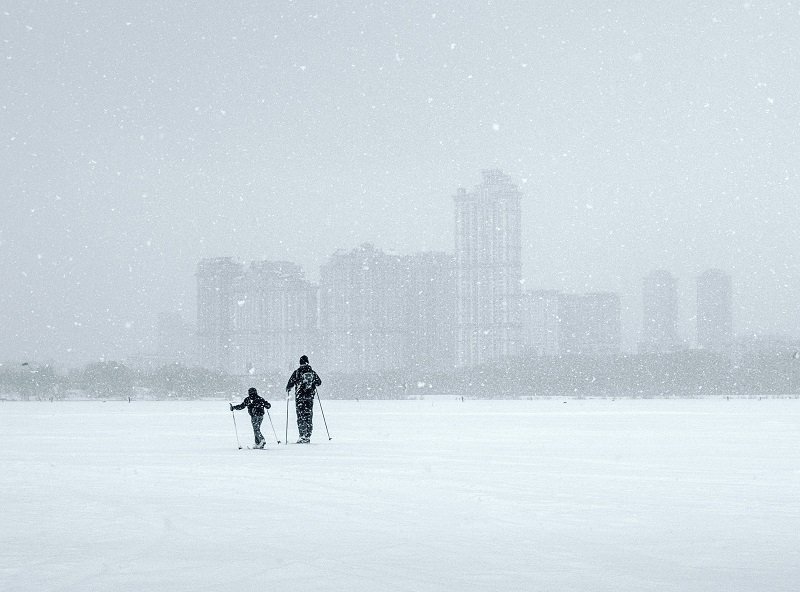
Conclusion
Providing you head out of the door fully prepared with all the necessary safety equipment shooting in wintry conditions can be incredibly enjoyable. There’s something incredibly peaceful about the snow drifting out of the sky, and the way the blanket of snow transforms every day scenes is magical.
Whatever happens you’re bound to have a nice time, but utilising these tips will help you to avoid disappointment when you get back to the warmth of your house to review your images.
Have you got any tips for winter photography? Or a favourite snowy photograph you want to show off? If you do feel free to leave a comment below!
Read More…
Ultimate Guide to Landscape Photography Pt 2: Camera Settings
The Photographer’s Glossary – A Guide to Common Photography Terms
Tearing Up the Rulebook – 12 Photography Rules and When to Break Them
The Ultimate Guide to Spring Photography
 |
 |
 |
 |

About Alex W.
Alex is the owner and lead writer for Click and Learn Photography. An avid landscape, equine, and pet photographer living and working in the beautiful Lake District, UK, Alex has had his work featured in a number of high profile publications, including the Take a View Landscape Photographer of the Year, Outdoor Photographer of the Year, and Amateur Photographer Magazine.
Thoughts on "Tips to Improve Your Winter Photography"
 |
 |
 |
 |
You can Get FREE Gifts. Furthermore, Free Items here. Disable Ad Blocker to receive them all.
Once done, hit anything below
 |
 |
 |
 |
